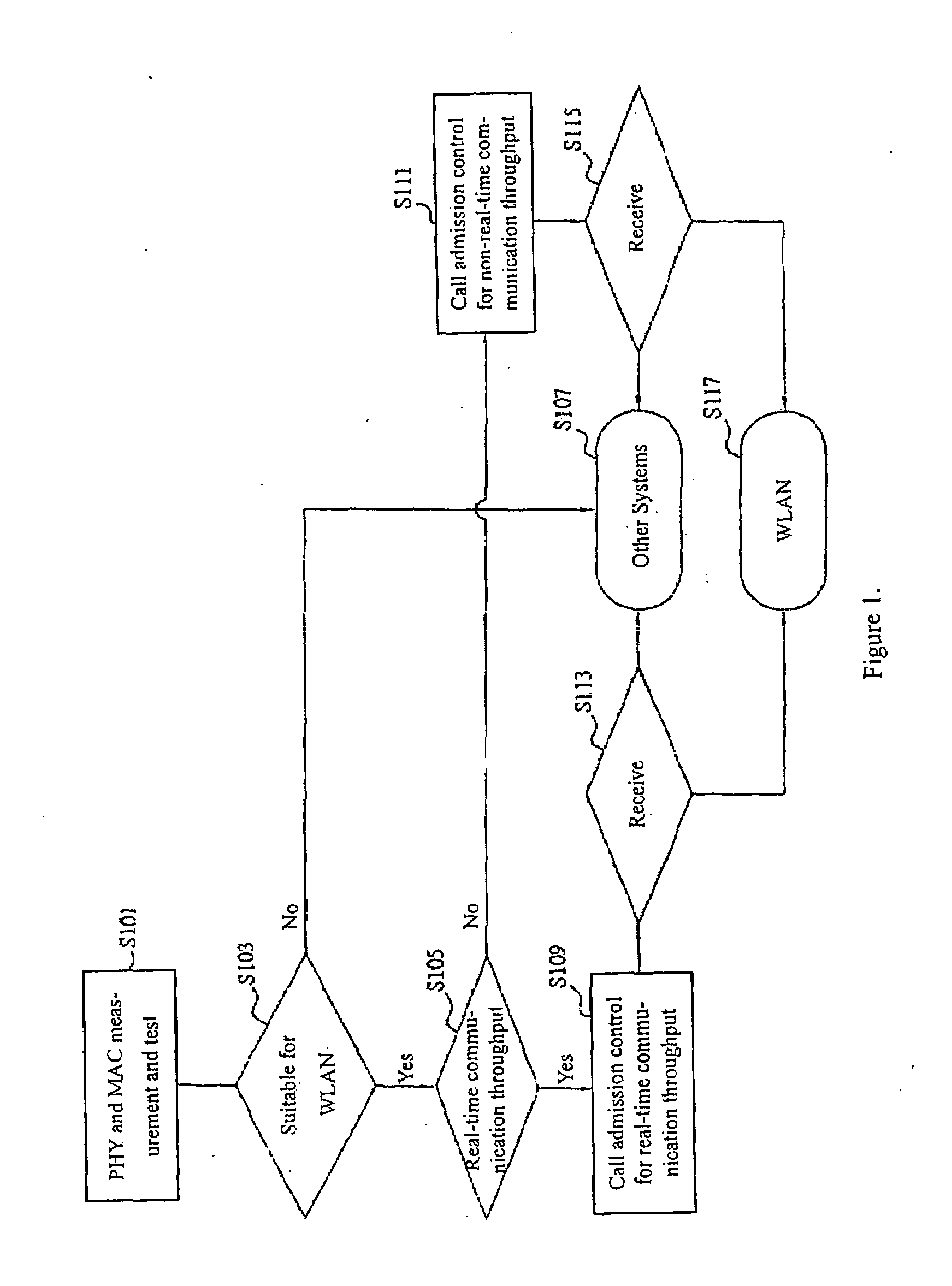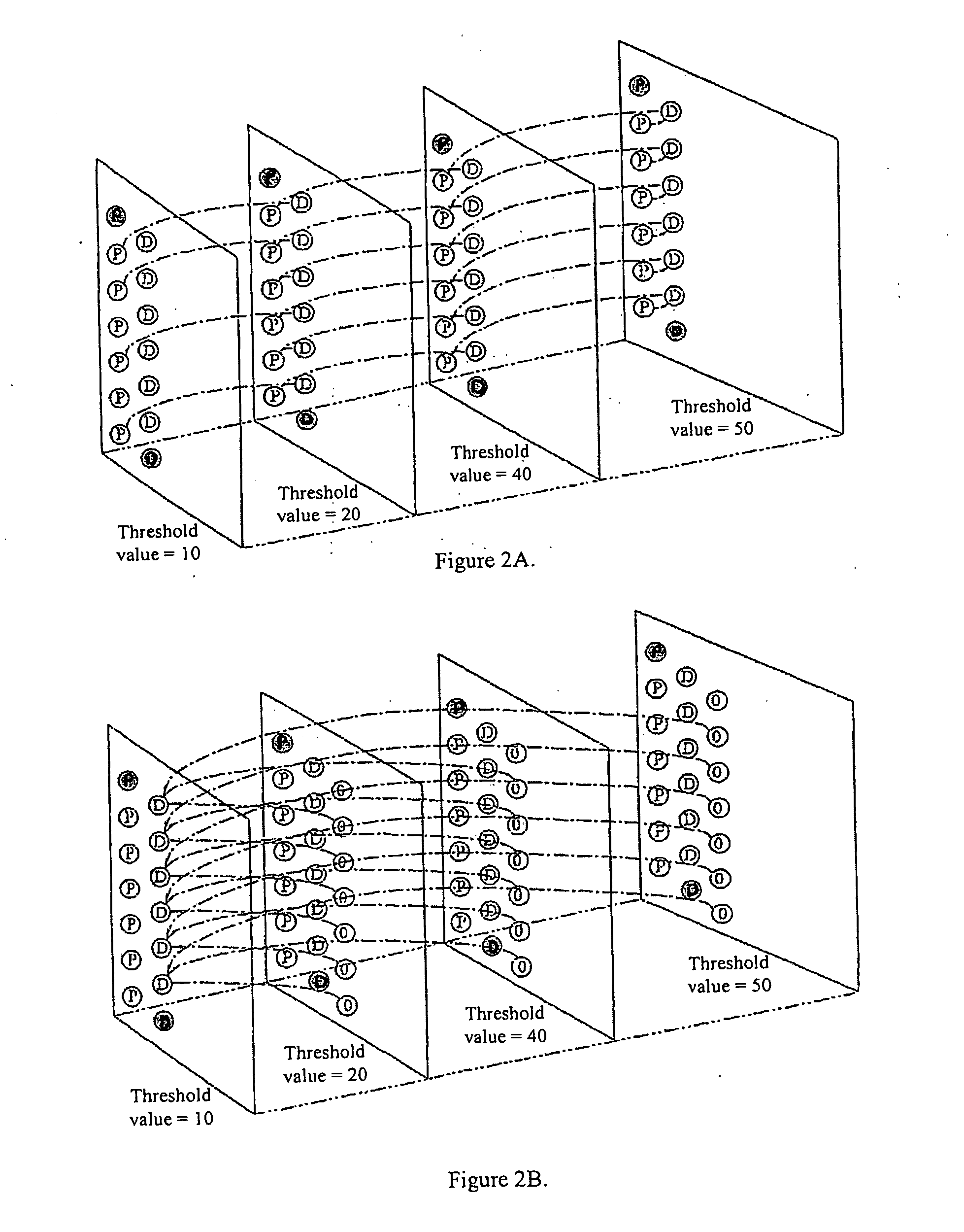Two-tier call admission control algorithm in IEEE 802.11 WLAN
- Summary
- Abstract
- Description
- Claims
- Application Information
AI Technical Summary
Benefits of technology
Problems solved by technology
Method used
Image
Examples
Embodiment Construction
[0017]Preferred embodiments of the present invention are subsequently described by referring to the accompanying drawings, where the same number indicates the same component.
[0018]FIG. 1 depicts a flowchart for a two-tier call admission control algorithm for IEEE 802.11 WLAN of a preferred embodiment of the present invention. In this figure, two independent viewpoints will be adopted to analyze the call admission control problem. First, from the perspective of a single user, because the channel status of the station platform is not always suitable for WLAN system, the station platform has to be partly tested with respect to the channel response, and the connection capacity for WLAN needs to be tested. Firstly, in the step S101, the MAC (Media Access Control) layer and the PHY (Physical) layer are measured and tested, which also corresponds to the first tier of the inventive algorithm. In the step S103, on the one hand, if it is suitable for WLANs, then go to Step S105 and determine ...
PUM
 Login to View More
Login to View More Abstract
Description
Claims
Application Information
 Login to View More
Login to View More - R&D
- Intellectual Property
- Life Sciences
- Materials
- Tech Scout
- Unparalleled Data Quality
- Higher Quality Content
- 60% Fewer Hallucinations
Browse by: Latest US Patents, China's latest patents, Technical Efficacy Thesaurus, Application Domain, Technology Topic, Popular Technical Reports.
© 2025 PatSnap. All rights reserved.Legal|Privacy policy|Modern Slavery Act Transparency Statement|Sitemap|About US| Contact US: help@patsnap.com



